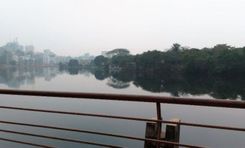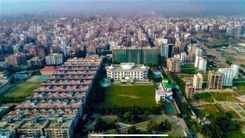The Technical Aspects of Buying Plots/Lands in Bangladesh

Real estate or the buying & selling of land or plots is one of the most lucrative and profitable businesses not only in Bangladesh but all over the world. However, the technical aspects of buying plots/lands in Bangladesh can easily put off even the most experienced business owners.
We have compiled some of the most technical terms associated with buying land in Bangladesh into this easy-to-understand, quick-read article. Knowing these technical terms and aspects about lands in Bangladesh will allow you to secure your future by helping you to keep legal ownership of your property and you will have a keen idea about any land for sale in Bangladesh as well.
Technical Terms that You Must Know!
Account Book: Real estate information of landowners based on a group of villages that are collected during land record survey is known as Account Book. It contains the collector’s name, tenant’s name, land pointer number, amount, type, and the amount of tax. Many types of Account Books are available such as the most well-known CS, SA, and RS account books.
CS Account Book: Government officials of 1910-the 20s measured each land and found out the volume, location, and usage types for the respective lands. Based on that they prepared the design of a group of villages with detailed information on landowners for the then account book. This account book is known as CS Account Book.
SA Account Book: After the issuance of the zamindari migration and tenancy act by the government in 1950, the then government survey officials corrected the CS Account Book. This new account book is known as the SA Account Book. Some places recognize this as S Account Book as well. It was first initiated in the Bengali year of 1362. Therefore, it is also known by many as the 62’s Account Book.
RS Account Book: Another survey was launched to fix errors known as RS Account Book. It was noted that survey officials did not prepare SA Account Book by visiting the lands locally and errors were plenty. Though this is not done yet throughout the country, many districts already published their own RS Account Book. The number of errors was reduced by a lot as Government officials measured the land themselves and in many places in Bangladesh, it is known as the BS Account Book.
BS Account Book: Survey run in 1990, which is also known as Dhaka Metropolitan Survey.
Any written statement that is admissible to the court is known as a document. However, according to the provisions of the Registration act, the land buyer and seller can register the transfer of the property by issuing an agreement paper which is also called the document.
“Khanapuri”: When preparing the mouza design after a survey, during account book preparation, every column of this book is called khanapuri. The survey staff completes this whole process of the entire book.
“Naamzari”: In the process of succession or purchase, or in any other process, if someone becomes a new owner of the land, the process of enrolling the owner is named “Naamzari”.
Schedule: The details that identify the land are called the schedule. In the schedule, the mouza’s name, account book number, pointer number, land area, amount of the land, etc. are all included.
Stain: A stain is meant for part of the land. When it is measured, it is marked with an ordinal identification number. During the preparation of the survey map, each land part is marked with a respective identification number, known as a stain. Not all contain a similar amount of land area. Generally, in the Mouza, the land of every landowner is marked separately in the autonomous region by margin kit or aisle to identify each part of the land based on the basis of land grade. This is also known as ‘Kitta’.
Screw Strain: When preparing or modifying the design of the land survey initially, the serial number of each of the nodes, which is excluded by mistake, etc. will be the combination of two land fragments is known as screw strain.
“Parcha”: The draft prepared by the land survey, which is delivered to the landowner before the final verification, is called a ‘Field Parcha’. After the verdict has been proved by the Revenue-officer, the copies of the verdict are open for appeal, and after that, the conclusive verdict copy gets published known as ‘Parcha’.
“Chita”: A complete detailed information of a small land’s amount, type is known as ‘Chita’. Advocate commissioner advises all parties of a distribution case before converting the primary decree to a final decree. A preliminary map based on the detailed measurement of the land is created known as ‘Chita’.
“Dokholnama”: This is the certificate for transferring the ownership. When a buyer acquires a property through auction, government issues him a certificate to complete the ownership transfer process. This certificate is known as “Dokholnama”. Government staff issue this ownership by using audio instruments, hoisting a red flag, or setting up a bamboo stick over the place. In case of issuing a decree and selling any property in the auction, sometimes the court issues the certificate to the buyer of the land. This is also known as “Dokholnama”. The person who gets this certificate either from the government or the court is assumed to be the owner of a certain property.
Rent: For land use, the land revenue collected by the government from the peasants on an annual period is called land rent.
“Baynama”: According to 1908’s Dewani act (order no 21, ruling no 94), if an immovable property’s auction selling is confirmed, the court provides a certificate to the buyer that contains detailed information regarding the land. This is known as “Baynama”. It includes information like the buyer’s name. If an auction selling is finalized, a “Baynama” for a buyer must be issued then. “Baynama” must include the date of the final auction.
“Jomabondi”: Zamindar or Talukdars included the peasants’ name, detailed information of land, and rent in a specific manner that is known as “Jomabondi”. Now, the Tohseel office includes similar records known as Jomabondi.
Submission: If land rent is given to the government or landowner, a receipt of proof of land in the fixed form (Form no- 1077) is provided. This is known as a submission disclaimer. Though this disclaimer is not a document of ownership, it contains significant proofs regarding the ownership.
DCR: After obtaining other government dues excluding land tax, the receipt issued in the prescribed form (Form No, 222) is known as DCR.
“Kabuliyat”: The proposal to grant settlement of lands to the peasants by the government is accepted by them. The government issues them a grant on this and this is known as Kabuliyat or Acceptance.
“Faraez”: Distribution ruling and process of dead person’s properties is known as “Faraez”
“Warish”: Warish means Heir. This is the inheritance under the religious decree. According to the religious ruling, if anyone dies before providing the will, his wife, children, or close relative may become the owner of his property. These persons are known as Warish.
“Hukumnama”: After having the land settlement from the Zamindars, peasants must prove the right of possessions. Amalnama or Hukumnama is the proof for that. In short, land settlement-related order paper from Zamindars for peasants is considered as Amalnama.
“Mouja”: During the Cadastall survey, thana based the number of villages, unions, mahallas are divided into various units. These units are marked by serial numbers. Each unit is known as a Mouja. One or more villages can constitute a mouja.
“Ameen”: Staff assigned to design the account book preparation and land survey are known as Ameen.
“Sikosti”: Due to the river breakdown, if a particular land is lost inside the river, then it is known as “Sikosti”. If this land gets its existence again within 30 years, then this land will be attributed to the person who was the owner before or his heirs will get the land ownership.
“Poyonti”: From the river base, if silts constitute a new land, it is known as Poyonti.
Annulment of Transaction: This means splitting the joint stockpiles and creating separate new account books. Peasants sometimes open a new account book with a part of the land from another account book while s/he is transferring or distributing the land. Opening this new account book is known as the annulment of a transaction. In short, creating a new account book with an amount of land from the main account book is considered as an Annulment of transaction.
Conclusion
Investing in Lands in Bangladesh is The Best for Your Future. In order to secure the future of you and your family and future heirs, all the technical aspects of buying or selling plots and land in Dhaka or anywhere in Bangladesh are a must-know!
To save your land & property and your families, you can share this information with your friends and families. Learn more about the laws of Bangladesh to be well-informed and secure from fraud.
Be vigilant and stay safe!
If you are looking to buy property, land, or plots, you can visit Bikroy.com’s property portal for hundreds of listings by real people all over Bangladesh.
| Lands for Sale in Dhaka | Lands for Sale in Chattogram |
| Lands for Sale in Dhaka Division | Lands for Sale in Khulna Division |
| Lands for Sale in Sylhet | Lands for Sale in Chattogram Division |











